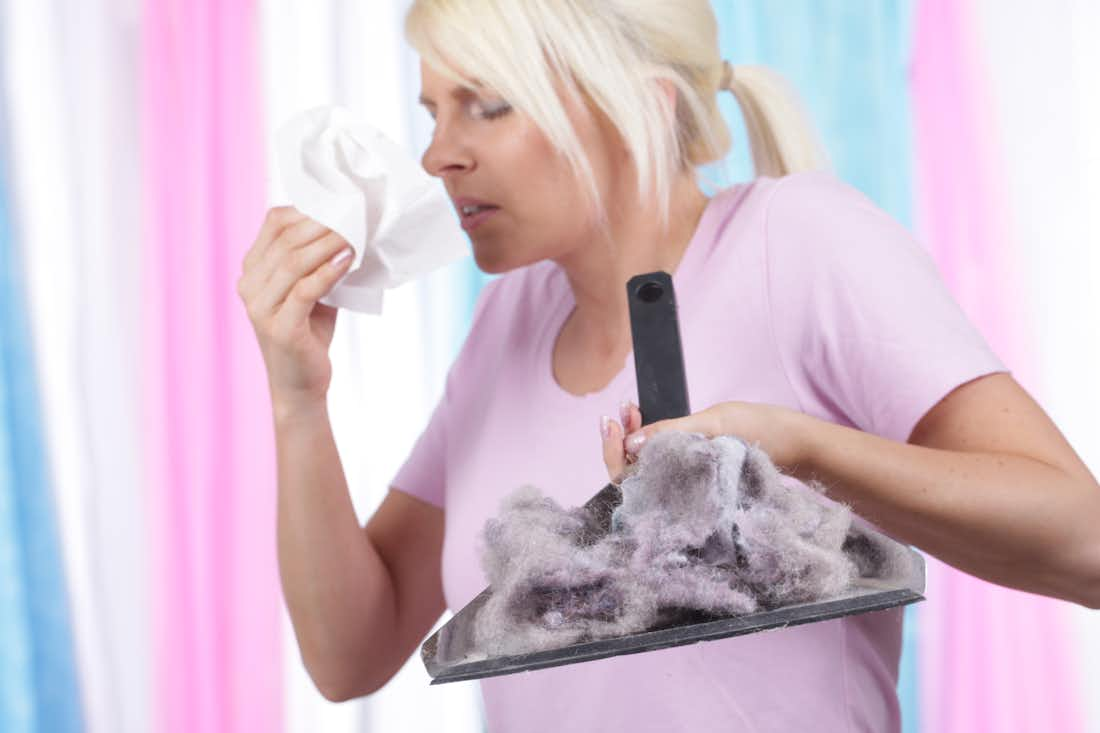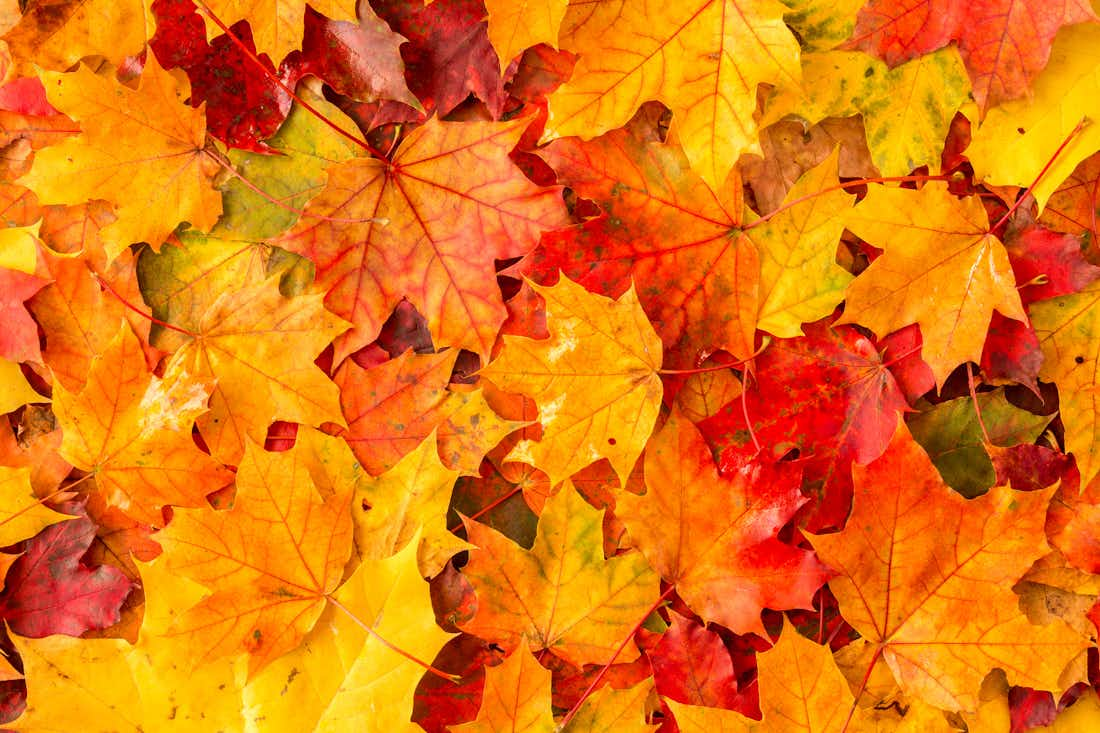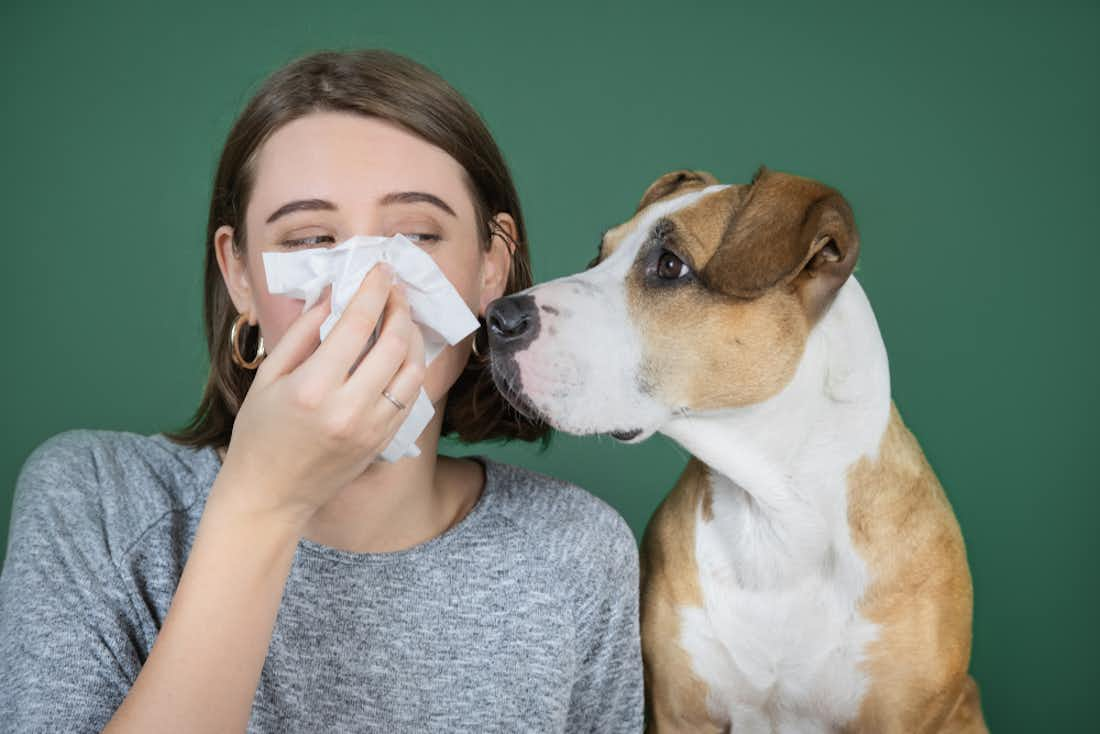Jul 20, 2022
How Does Dust Form?
minute read
When people think of allergies, the first thought that comes to mind is usually either outdoor seasonal allergies or allergic reactions to food. But believe it or not, one of the most common allergies is floating all-around you in your humble abode as you read this article.
Dust is an indoor allergen that you can probably see now and then gathering up on your TV stands or countertops. But did you know that those particles are living microorganisms?
If you’re just as confused as we once were about what in the world dust actually is, as well as where the heck it comes from, we’ve got you covered. Here’s everything you need to know about one of the peskiest allergens on the planet.
What Is Dust?
It’s hard to really define exactly what dust is, as it’s probably easier to define what it’s not. That’s because dust can be a combination of pretty much everything in your home. It’s composed of dead skin and hair cells, dirt, carpet fibers, bacteria, dust mites, pollen, soil particles, and much more.
With that said, the area of concern here is the dust mites, which are microscopic insect-like pests that are the root cause of allergic reactions and asthma in susceptible populations. These little guys are the reasons why “dust” makes you sneeze and cough all day long.
There are hundreds of thousands of dust mites in your house right now just living in your bedding, mattresses, carpets, furniture, pillowcases, and curtains. While they’re not parasites and are essentially harmless, your immune system doesn’t know that.
Some people’s immune systems wrongfully perceive dust mites as harmful, and not the actual dust mite, but their droppings is what the body reacts to (gross!). When this happens, it tells the body to deploy its defense mechanisms to get the dust mite poop out. This is where the runny and stuffy nose, nasal congestion, sore throat, and other symptoms come into play.
What Are the Sources of Dust?
Almost anything in your home can be a source of dust, but a few common sources of dust might be more troublesome than others.
Yourself
Pollen is like a potpourri filled with all sorts of different particles. But one of the main contributors to these annoying allergens is currently reading this sentence. That’s because dead skin cells and hair particles are large contributors to dust formation.
In fact, every minute of your life, you’re shedding about 30,000 to 40,000 skin cells. That’s equal to nine pounds of skin every single year. So it’s really no wonder why these microscopic particles can cause you so much frustration if you breathe them in. That’s also why they are most commonly found in our bedding, because that is where we do most of our shedding!
Pollen
The majority of dust that you’re seeing on the inside of your home might actually be from the outside. Pollen, ragweed, and other outdoor allergens can easily stick to your clothes, hair, and shoes.
As you move around your home, sit on the furniture, or lay in your bed, these particles can then stick to these surfaces. Especially if the air in your home is dry, these particles might float around the atmosphere in your home to make a dusty nightmare for your allergy symptoms.
Pets
While your dog or cat can surely lighten up even the most severe allergy attacks, pet dander is another contributor to household dust particles that can make your allergy symptoms worse.
Your pets shed dead skin flakes in the same way you do, but the added element that makes pet dander even worse is their fur. Not only can they shed their hair and make for a more uncomfortable experience for you, but if you can spread outdoor allergens onto their fur by petting them or snuggling up with them.
Insects
Queasy stomachs, beware. As it turns out, some of the dust particles you’re finding in your home might actually be the body parts and fecal matter of dead insects. Cockroaches specifically are known for aggravating allergy symptoms, and they aren’t too picky about which home they invade.
Food Crumbs
We’re all guilty of leaving a few crumbs on the counter and then wiping them onto the floor. Long lost food particles can gather and become smaller if frequently stepped on, contributing to excess dust in the environment.
How To Get Rid of Dust
Dust can form easily, but you can get rid of it just as quickly. Here are some of the best ways to breathe easy in your own home.
Keep It Clean
The best way to reduce exposure to dust is to get rid of it, and this can be done by taking some time to keep your living space clean.
Since dust likes to stick to soft surfaces like carpets, bedding like pillowcases, comforter, blankets, and fabric upholstery, it’s important to give these a nice wash now and then. Your bedding should be washed at least once every two weeks in warm water and then dried in a drying machine to prevent pollen from sticking to it when hung outdoors.
Dust and lint can cling to blinds, shelves, baseboards, among other things.
As for carpets and furniture, try to vacuum the surface at least once a week to remove pet dander and dust mites. Don’t forget about hardwood floors and the hard surfaces in your home as well. Use a microfiber cloth, damp cloth, or feather duster to easily pick up dust and dirt, so it doesn’t bother you as much.
Additionally, you can try to prevent some of this dirt from building up in the first place by placing a doormat at your entryway. This allows you and guests to wipe their shoes before entering your home, making it less likely that they’ll track in some outdoor allergens. Or make it a no shoe house — which is definitely the best way to prevent dirt and dust from shoes.
Purify and Humidify
Allergies are generally worse on dry, windy days. This is because there’s no moisture in the air to weigh down airborne particles, making them much more easily transferable. With that in mind, trying to increase the moisture in your home might help alleviate some of the symptoms of dust allergies.
Airborne dust can build up in filtration systems, air ducts, HVAC systems, dryer, furnace, and air conditioning units, so it's vital to keep them clean. Air purifiers can help keep the amount of dust in the air to a minimum.
Humidifiers are a great way to weigh down dust, so it doesn’t enter your airways as easily. In general, the humidity inside your home should be around 30 to 40 percent for maximum comfort. Humidity over 40 percent can cause dust mites to thrive, but humidity too low can make it easier for airborne particles to float through the air.
You may also want to consider purifying the air with a HEPA filter. HEPA stands for “high-efficiency particulate air,” and, theoretically, it can remove 99.97 percent of dust, mold, bacteria, pollen, and other airborne particles from the atmosphere.
Just make sure you change your air filters periodically to ensure the cleanest air possible.
Choose Your Pets Wisely
There’s really nothing better than having your very own furry friend living in your home with you. That is until they start making you sneeze every single day.
Before you adopt your next little buddy, do some research into dog and cat breeds that are hypoallergenic. While there’s no such thing as a truly hypoallergenic pet, certain breeds like Siberian cats or Afghan Hounds are known to be less triggering for those who are susceptible.
If it’s too late and you already have an animal that’s making you sneeze and wheeze, you can still minimize their wrath by regularly grooming and bathing them to remove excess skin cells while washing away other allergens on the fur.
Alleviating Dust Allergies
Even if you leave your house spotless at all times, it’s still possible to have an allergic reaction to dust. For times when it’s impossible to clean everything, there are ways that you can create your own personal shield to this common indoor allergen.
For one, antihistamine medications work quickly and effectively for reducing the symptoms of dust allergies, such as runny nose, sneezing, watery eyes, and sinus pressure. Oral antihistamines, nasal sprays, and eye drops can all work together to alleviate the severity of all types of symptoms.
And if you’re tired of loading up on these medications, you can try to stop your allergies from bothering you at the source. Sublingual immunotherapy is the only FDA-approved method actually to treat allergies rather than just its symptoms. In fact, 90 percent of individuals who used immunotherapy saw improvement in their general health status.
Of course, a combination of all of these allergy treatments will likely be most effective, so feel free to mix and match different methods to see what works best. You’ll soon have allergies eating your dust.
Breathe Easy
Dust can form from pretty much anything that flakes or dries out. Dust particles in your home can be made of a combination of dead skin and hair cells, dust mites, pet dander, mold, dead insects, outdoor pollen, food debris, and more.
Dust itself doesn’t pose a risk to your health, but your immune system doesn’t know that. As a response, allergy symptoms often present themselves when dust particles enter the airways.
You can minimize these responses by frequently cleaning areas that latch onto dust, such as clothing, bedding, and furniture. Additionally, using an air filter or HEPA filter can help reduce the abundance of other harmful particles in the atmosphere.
If dust allergies are getting the best of you, your online allergist is in. With Cleared, you can get personalized treatment from home with free ongoing care from our US-licensed allergists and nurses. It’s personalized relief like you’ve never seen before.
Sources:
Tracing the chemistry of household dust | Chemical and Engineering News
Your Skin | Nemours KidsHealth%20of%20cells%20every%20year!)
Authors

Dr. Payel Gupta
Medically reviewed by Dr. Payel Gupta



